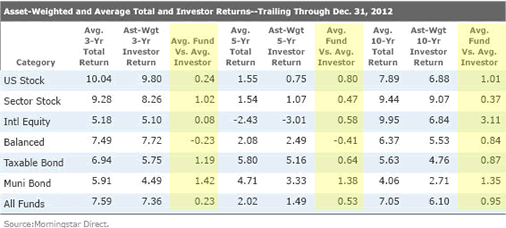 Starbucks is offering a free $5 gift card for new members of their Starbucks Rewards program that register a Starbucks (gift) card. If you don’t have one, you can either buy one from a physical store or use their mobile app. Ends 3/15/13.
Starbucks is offering a free $5 gift card for new members of their Starbucks Rewards program that register a Starbucks (gift) card. If you don’t have one, you can either buy one from a physical store or use their mobile app. Ends 3/15/13.
Indeed, the easiest way to get a free $5 gift card is to download their smartphone app (Android/iOS) and sign up for a new account via the app. When asked to register a card, choose to “Get a Mobile Starbucks Card”. You may need to wait a few minutes, but the card should eventually get credited with $5 without having to load it with your own money. Free caffeine, good for at least two iced coffees with milk per person! 🙂
 The index fund fee wars continue… You may or may not know that Blackrock’s iShares is the largest ETF provider in the world, with over 250 US-listed ETFs and the largest asset base by a good margin. iShares ETFs tend to have big volume and are the favorites of Wall Street traders and also large money managers. But Vanguard is catching up, and iShares responded by making a move in October 2012 to appeal to long-term, buy-and-hold investors who want low-cost, broad, index ETFs. (I’m sure they also saw how people who wanted Emerging Markets exposure quickly switched from EEM to VWO due to the big fee difference.) See the official iShares press release for more details.
The index fund fee wars continue… You may or may not know that Blackrock’s iShares is the largest ETF provider in the world, with over 250 US-listed ETFs and the largest asset base by a good margin. iShares ETFs tend to have big volume and are the favorites of Wall Street traders and also large money managers. But Vanguard is catching up, and iShares responded by making a move in October 2012 to appeal to long-term, buy-and-hold investors who want low-cost, broad, index ETFs. (I’m sure they also saw how people who wanted Emerging Markets exposure quickly switched from EEM to VWO due to the big fee difference.) See the official iShares press release for more details.




 The Best Credit Card Bonus Offers – March 2024
The Best Credit Card Bonus Offers – March 2024 Big List of Free Stocks from Brokerage Apps
Big List of Free Stocks from Brokerage Apps Best Interest Rates on Cash - March 2024
Best Interest Rates on Cash - March 2024 Free Credit Scores x 3 + Free Credit Monitoring
Free Credit Scores x 3 + Free Credit Monitoring Best No Fee 0% APR Balance Transfer Offers
Best No Fee 0% APR Balance Transfer Offers Little-Known Cellular Data Plans That Can Save Big Money
Little-Known Cellular Data Plans That Can Save Big Money How To Haggle Your Cable or Direct TV Bill
How To Haggle Your Cable or Direct TV Bill Big List of Free Consumer Data Reports (Credit, Rent, Work)
Big List of Free Consumer Data Reports (Credit, Rent, Work)